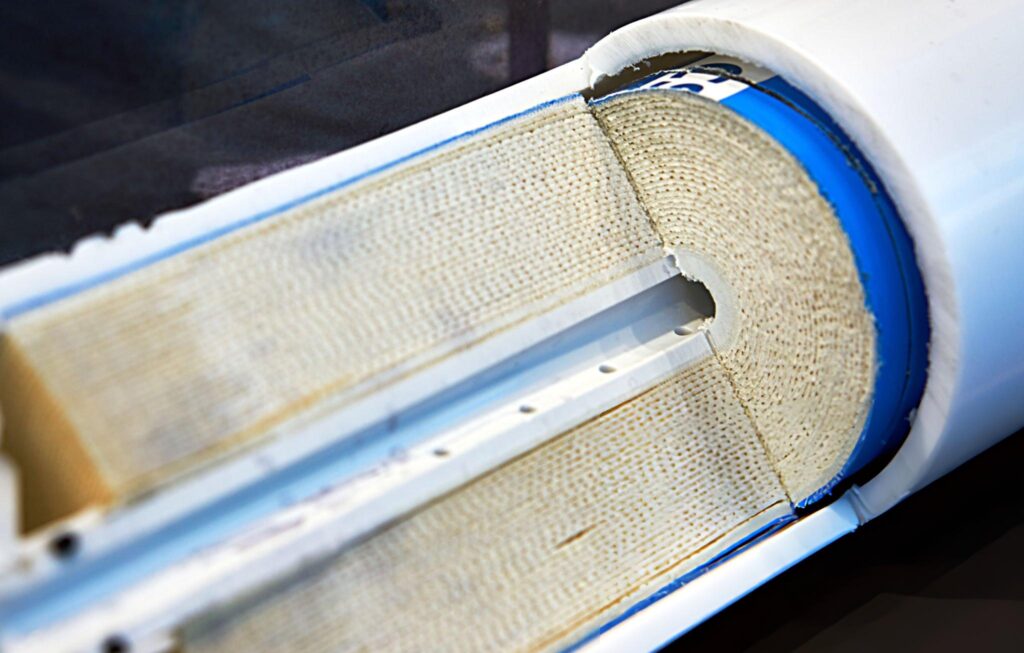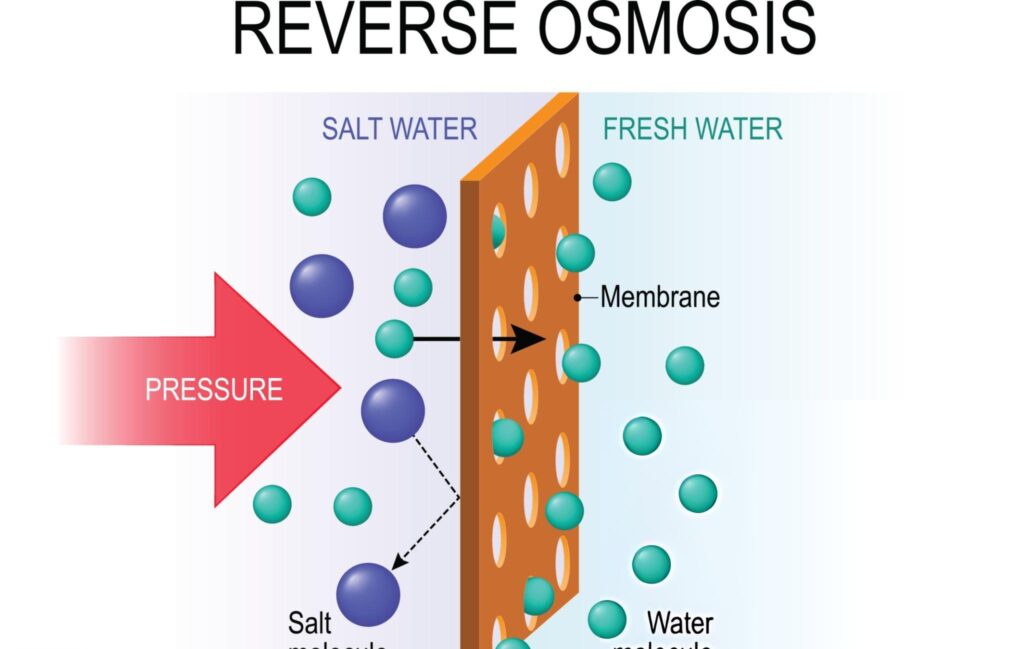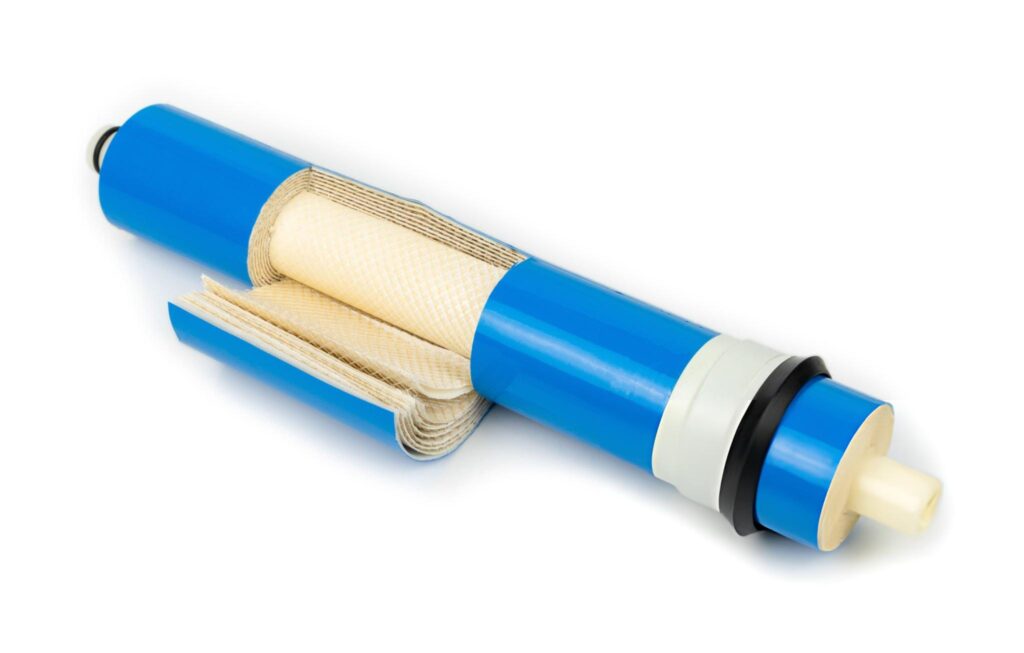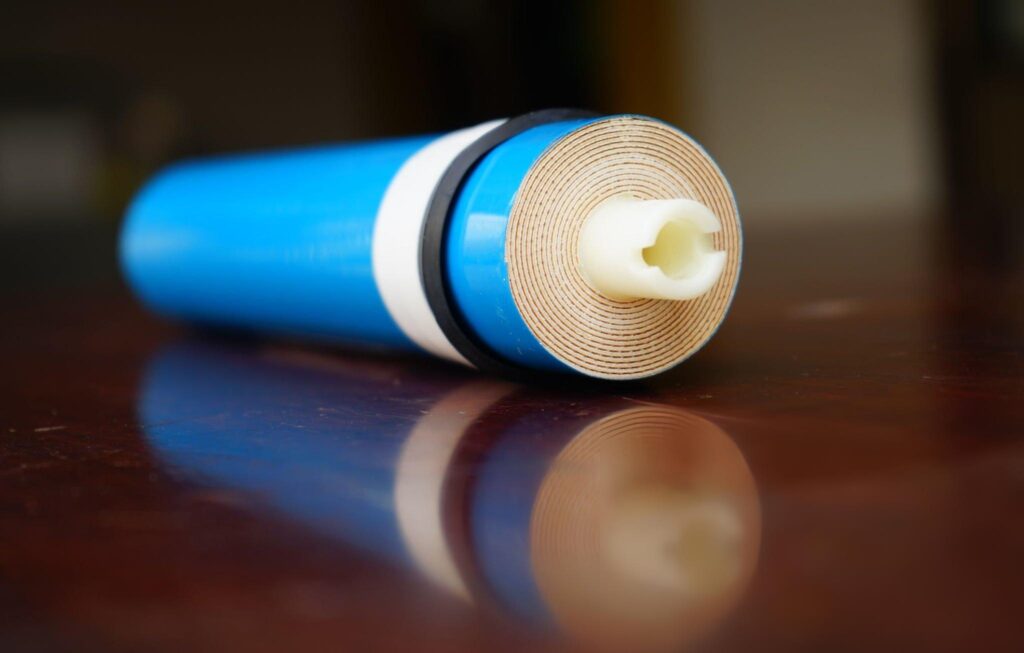Introduction
Reverse osmosis (RO) membranes are the heart of any RO filtration system. They determine how effectively contaminants are removed, ensuring clean water for hydroponics, drinking, and industrial use. But have you ever wondered how these high-tech membranes are made? Let’s break down the process step by step.

Materials Used in RO Membranes
Most modern RO membranes are made from thin-film composite (TFC) polyamide, a material that offers excellent filtration efficiency. Earlier membranes were made from cellulose acetate, but TFC polyamide has largely replaced it due to its superior rejection rates and durability. The membrane structure includes:
- Polyamide selective layer – The ultra-thin top layer that filters out contaminants.
- Microporous polysulfone layer – A support layer that provides mechanical strength.
- Non-woven polyester fabric – The base layer that holds everything together.
Manufacturing Process of RO Membranes
A. Fabrication of the Polyamide Layer
The most critical part of an RO membrane is its ultra-thin polyamide layer, which is formed using a process called interfacial polymerization. This involves:
- Dipping a porous support layer in an aqueous solution containing m-phenylenediamine (MPD).
- Exposing it to an organic solution containing trimesoyl chloride (TMC).
- The two chemicals react at the interface, creating an ultra-thin but highly selective polyamide layer.
This selective layer allows water to pass through while blocking contaminants like salts, heavy metals, and bacteria.

B. Formation of Support Structure
To function properly, the membrane needs a strong yet porous support system. This includes:
- A non-woven polyester fabric that provides structural integrity.
- A microporous polysulfone layer, which ensures water flow without compromising strength.
- The polyamide rejection layer, responsible for the actual filtration.
Each layer is carefully manufactured to balance permeability and mechanical stability.

C. Rolling and Spiral Winding Process
Once the membrane sheets are formed, they are cut to size and assembled into a spiral-wound configuration. This process includes:
- Wrapping multiple membrane sheets around a perforated central tube.
- Layering the membrane sheets with a feed spacer and a permeate carrier.
- Sealing the edges to prevent bypass flow and ensure proper filtration.
This spiral-wound design maximizes surface area while keeping the system compact and efficient.

D. Curing and Testing
After assembly, membranes undergo curing and rigorous quality testing. This involves:
- Heat treatment and chemical stabilization to improve durability.
- Performance testing for salt rejection, flow rate, and pressure resistance.
- Ensuring the membrane meets industry standards before shipping.
Enhancements and Variations in RO Membranes
RO membranes continue to evolve with technological advancements. Some modern improvements include:
- Low-pressure membranes – Designed to work efficiently at lower operating pressures, saving energy.
- Anti-fouling membranes – Special coatings that resist biofilm and scaling, reducing maintenance.
- Nanocomposite membranes – Infused with nanoparticles to improve rejection rates and longevity.
- High-recovery membranes – Used in water-scarce environments to minimize waste.

Challenges and Future Innovations
Despite their efficiency, RO membranes face challenges like fouling, biofilm growth, and degradation over time. Researchers are working on solutions such as graphene-based membranes and carbon nanotube technology, which promise faster filtration and longer lifespans.
Conclusion
Reverse osmosis membranes are a marvel of modern filtration technology. Their production involves precise chemical engineering, advanced material layering, and rigorous testing to ensure optimal performance. Whether you’re running a hydroponic farm or just looking for the best water filtration, understanding how these membranes are made helps you appreciate their role in delivering clean, purified water.
